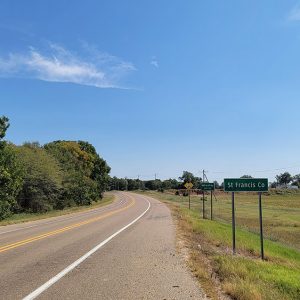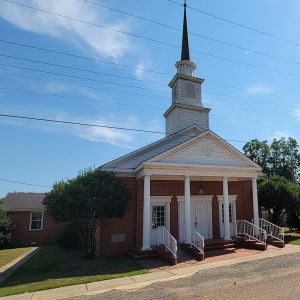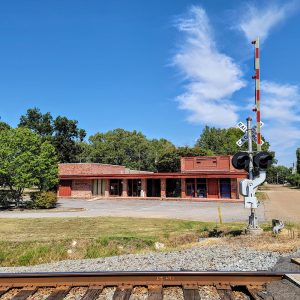calsfoundation@cals.org
Wheatley (St. Francis County)
| Latitude and Longitude: | 34°54’46″N 091°06’36″W |
| Elevation: | 210 feet |
| Area: | 3.172 square miles (2010 Census) |
| Population: | 355 (2010 Census) |
| Incorporation Date: | October 19, 1907 |
Historical Population as per the U.S. Census:
|
1810 |
1820 |
1830 |
1840 |
1850 |
1860 |
1870 |
1880 |
1890 |
1900 |
|
– |
– |
– |
– |
– |
– |
– |
– |
– |
– |
|
1910 |
1920 |
1930 |
1940 |
1950 |
1960 |
1970 |
1980 |
1990 |
2000 |
|
330 |
477 |
305 |
362 |
406 |
443 |
507 |
523 |
413 |
372 |
|
2010 |
|
|
|
|
|
|
|
|
|
|
355 |
|
|
|
|
|
|
|
|
|
Wheatley is a town in the southwestern corner of St. Francis County. Its northern portion is crossed by Interstate 40, and its southern portion is crossed by U.S. Highway 70 and by the tracks of the Union Pacific Railroad.
During the time between the Louisiana Purchase and the Civil War, the area was not attractive to American settlers. Surveyors passed through the area planning a railroad to connect Little Rock (Pulaski County) and Memphis, Tennessee. Although work was done on the eastern and western portion of the railroad before the Civil War, the central portion of the Memphis and Little Rock Railroad was not built until after the war was over; it was completed in 1871.
Nineteenth-century trains required stops every few miles to replenish fuel and water, and railroad depots were built for that purpose, generally attracting a few businesses and homes. The depot at the location of Wheatley was first called Britton; it received a post office in 1870, which was renamed Wheatley in 1872. The latter name comes from Wheatley Dennis, a resident of the new community. At the time it was established, the community was in Monroe County, but the Arkansas General Assembly adjusted the county boundary in 1873, placing Wheatley in St. Francis County. Around this time, a school was built in Wheatley.
Around 1900, the Memphis and Little Rock Railroad became part of the Chicago, Rock Island and Pacific Railroad. Early in the twentieth century, the Missouri and North Arkansas Railroad (M&NA) was extended to Helena (Phillips County), crossing the Rock Island line at Wheatley. This railroad crossing prompted a growth in population, leading to incorporation of the town in 1907. In 1909, the Wheatley Rice Milling Company was established, with a rice dryer and storage facility near the railroad crossing. An oil and fuel company opened in Wheatley in 1923.
A national highway, known first as the Lee Highway and later as U.S. Highway 70, was established in the 1920s, connecting some local roads with new construction to cross the United States. In Arkansas, the highway paralleled the railroad track of the Rock Island, bringing the highway through Wheatley. In 1929, the rice dryer burned to the ground, but it was rebuilt; the rice dryer became part of the Riceland Food, Inc., corporation in 1945. In 1929, Wheatley was struck by a tornado, killing five residents and causing thousands of dollars of property damage.
In 1954, Wheatley had a Methodist church, a Baptist church, a Lutheran church, and several African-American congregations. The town also had a wood products manufacturing company, a welding shop, a café, four mercantile stores, and two grocery stores, as well as the school and the post office. Agriculture, including both rice and cotton, was the main occupation of the town.
Flooding in White County in 1945 damaged the M&NA, driving the company into bankruptcy. From 1949 to 1951, the track continued to be used between Helena and Cotton Plant (Woodruff County), passing through Wheatley, but the Helena and Northwestern Railroad also failed. The Rock Island likewise went into bankruptcy by 1980; however, the Union Pacific Railroad acquired the line between Little Rock and Memphis and still operates it in the twenty-first century. Meanwhile, in the late 1960s and early 1970s, Interstate 40 was built across Arkansas, roughly parallel to U.S. Highway 70. An interchange with State Highway 78 was built in Wheatley, and some businesses were established at the interchange.
The school districts of Wheatley and Palestine (St. Francis County) were combined into the Palestine-Wheatley School District in the 1980s. The district’s middle school is in Wheatley, and the elementary school and high school are in Palestine. Riceland Foods continues to be the largest business interest in Wheatley. The Smith House, designed by Charles Thompson and built in 1919, was added to the National Register of Historic Places on December 22, 1982.
For additional information:
Chowning, Robert W. History of St. Francis County, Arkansas. Forrest City, AR: Times-Herald Publishing Company, 1954.
Steven Teske
Butler Center for Arkansas Studies
 Johnson Cemetery
Johnson Cemetery  Palestine-Wheatley Middle School
Palestine-Wheatley Middle School  Riceland Silos
Riceland Silos  St. Francis County Map
St. Francis County Map  Entering Wheatley
Entering Wheatley  Wheatley Church
Wheatley Church  Wheatley Church
Wheatley Church  Wheatley City Hall
Wheatley City Hall  Wheatley Street Scene
Wheatley Street Scene  Wheatley Street Scene
Wheatley Street Scene  Wheatley Street Scene
Wheatley Street Scene  Wheatley Water Tower
Wheatley Water Tower 



I am doing family research and have been told that my grandfather (Dr. Booker Jordan ) had a practice there. My father’s name is William James Jordan and I believe that he was born there.
Interesting. We saw the silos from Highway 40 and wondered. My grandfather was a rice farmer in Jennings, LA.